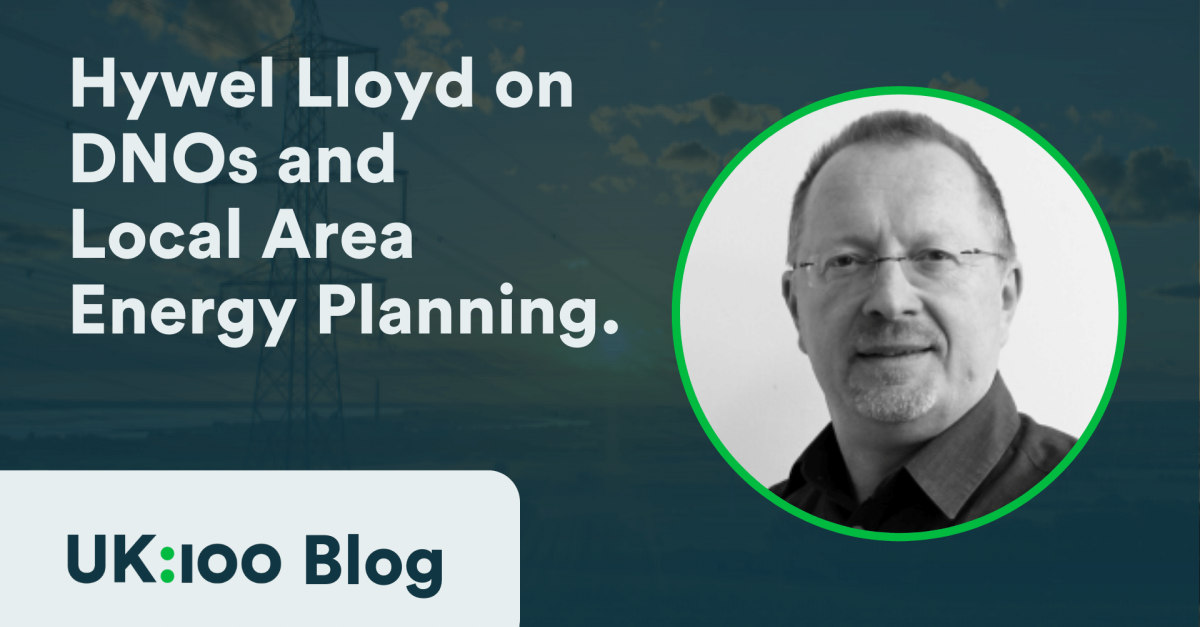
In the journey to a fair and successful transition to Net Zero we know both local government and the Distribution Network Operators (DNOs) are key – they both oversee assets vital to the transition, be that the local electricity network, public infrastructures, land and housing.
In some respects, as they oversee the more dynamic activities of keeping the electricity flowing, services running and communities thriving both have roles in their own domains akin to a ‘system operator’, with local government taking a strategic role in land use, in local mobility, on citizen development. As many of these things will increasingly depend on decarbonised energy, often electricity, a robust strategic relationship between local government and DNOs is also key. We’ve explored some of this in the recent Insights paper.
The last few months has seen a ramp up in the examination of the DNO proposed business plans for 2023/28, with a call for evidence in January preceding a series of Open Hearings over the last fortnight. Having watched them all we’ve captured some of the key observations, to help further strategic engagement by members with their DNO.
One of the most striking observations is the imbalance in funding horizons that both sectors have to operate within – what local government might give for a five year ‘settlement’ of their main revenue streams and to some extent their part in delivery and support of nationally agreed priorities, not least Net Zero. And especially when the time horizon of addressing Net Zero, managing a fair and successful transition and all that goes with it in each and every community really isn’t a short term proposition.
It is increasingly clear that DNOs are building their capacity to work with local government – yet also clear they have different views on how senior and strategic, or operational such activities might be; with a range of proposed developments of teams and capabilities. We hope the Open Hearings will have settled the argument that such engagement must be both strategic and operational – and most importantly business as usual. We will continue to convene joint working between members and DNOs to help develop our collective practice.
This will be increasingly important and active with the growth and development of Local Area Energy Planning. While we await the emerging development of a framework soon, it is clear that more localities will be subject to some form of LAEP, that the involvement of local government will be key; and that that data and evidence will begin to add granularity to the DNO Distribution Future Energy Scenarios, and in course inform their ED3 plans.
Given the significant resource and effort DNOs and other networks have put into stakeholder engagement we can see an important guiding role for local government to come as the honest broker for a place – ensuring the engagement work of the gas and transmission networks (possibly due from 2024) is integrated with that of the DNOs, and informed by the emerging Distribution System Operator (DSO). We would suggest for the next price control there should be one area based stakeholder engagement, perhaps linked to the LAEPs and Net Zero, rather than multiple single company approaches – and that local government should lead.
The final overarching observation is a tad technical, yet key to how fair the transition might be. The terrible invasion of Ukraine highlights for many the need for a greater say and control over where our energy comes from; it also reinforces many of the actions in climate emergency plans across the country, from speeding up EV charge point roll-out, to electrifying buses, from building heat networks to installing heat pumps. While the immediate answer to this might seem to be ‘can we have more connections, more wires, more power…’ as BEIS and Ofgem have already recognised (in their Smart System & Flexibility Plan) that’s actually the most expensive way to proceed.
As we all engage with our DNOs, our LAEPs and the future of a net zero energy system the new watch words are flexibility and optimisation – let’s deploy local storage and other energy assets, let’s manage peak and let’s make the most of the kit we have without the expense and impact of over capacity.
If you would like more information on these questions of a fair net zero energy transition, or to join a future session please email Karen Barrass at karen.barrass@uk100.org.


